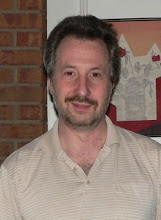When rookie Darren Helm showed up at Detroit Red Wings training camp last fall with a Stanley Cup championship on his resume, his plan was to make the parent team.
But that wasn't general manager Ken Holland's plan.
Helm was sent back to the American Hockey League with Holland telling him that he would see him in the playoffs. Now Helm is back with the Red Wings, more confident, quicker off the start and perhaps ready to claim the title as the NHL's fastest forward.
When it comes to prospects, Holland's take is "they are ready when they're ready."
If you look closely at the Detroit Stanley Cup Finals roster, particularly at youngsters like Jonathan Ericsson and Helm, it's clear why this franchise is the envy of most teams around the NHL. They know how to find players, they know how to nurture them, and they know how to handle them once they are ready for market.
This is a team that picks near the bottom of the first round every year and yet they are still probably have the NHL's deepest talent well.
Their three top centers — Pavel Datsyuk, Henrik Zetterberg and Valtteri Filppula — are all draft picks and Filppula was the earliest pick at 95th in 2002. Zetterberg was drafted 210th in 1999 and Datsyuk was the 171st pick in 1998.
Johan Franzen was a fourth round pick, and most scouts had him pegged as a role player. Holland told Franzen he believed that he could score more than he showed in his first season. Today, Franzen is one of the NHL's top power forwards
The funny aspect of the Franzen story is that the Red Wings have so much talent that they may not have known how much Franzen had developed had Tomas Holmstrom not been injured last season. With Holmstrom out, his role expanded and he started scoring goals as if he were Gordie Howe.
The other day, Franzen joked that he might still be a checker had Holmstrom not gone on the injury list.
Ericsson, a 6-5 defenseman, was 291st choice in 2002, and he probably was ready to play for most teams in the NHL last season. But he wasn't ready for the Red Wings.
Coach Mike Babcock wanted him earlier than he got him.
But Holland's approach is that the Red Wings are not running apprenticeship programs. When a prospect arrives in Detroit, he wants a finished product with no assembly required.
Helm played well for the team last spring and contributed to their Stanley Cup championship run. But the Red Wings still didn't believe he was ready.
Ericsson played three seasons in the AHL, and when he showed up, he was a model of composure. He performs as if he has been in the NHL for 400 games, not 34 games, counting the playoffs.
Goaltender Thomas McCollum is a highly regarded prospect, but he has already been told he will spend two or three seasons in the AHL. Former first-round pick Jakub Kindl has played two full seasons in the AHL, and he's probably going to spend another one there before he gets his chance to be a Red Wing.
The perception is that the Red Wings draft better than other teams, but their success isn't just about having scouts with sharp eyes for talent.
It's also about the commitment they have to slow-cooking prospects in an era when most GMs seem to want to microwave. Holland believes that coaches all like "new toys" but they become bored easily if the toy doesn't work properly. His belief is that the team's interests are better served if the toys show up performing like they should.
The Red Wings now have a lengthy history as a puck possession team, which began under former coach Scotty Bowman's command. Scouts look for players that fit that game plan. The Red Wings aren't looking for the toughest guy in the Western Hockey League. They are looking for the guy in the WHL who can protect the puck when he's being heavily checked. They are looking for the guy who can make plays at high speed. They are looking for the defenseman who passes as well as he defends. The Red Wings look for "between the whistles" toughness, not "after the whistle" toughness.
They look for the same style of players when they make trades or sign free agents. Dan Cleary and Mikael Samuelsson didn't have noteworthy careers until they were brought into Detroit's system. They became valuable NHL players under the Red Wings' guidance. The Red Wings liked Cleary's ability to play a variety of roles and they liked Samuelsson's big shot and offensive instincts.
Even the players understand that there are benefits to playing in this organization. Veterans take less to play in Detroit. Prospects are willing to wait longer to get there.
No game plan is flawless. And even the best franchises guess wrong on players and have down seasons. But in a salary cap world, it's hard not to look at Detroit's success, and its opportunity to win back-to-back titles, and not view the Red Wings as the NHL's model franchise.
They can't outspend anyone, and yet they seem to receive more talent for their dollar.
But that wasn't general manager Ken Holland's plan.
Helm was sent back to the American Hockey League with Holland telling him that he would see him in the playoffs. Now Helm is back with the Red Wings, more confident, quicker off the start and perhaps ready to claim the title as the NHL's fastest forward.
When it comes to prospects, Holland's take is "they are ready when they're ready."
If you look closely at the Detroit Stanley Cup Finals roster, particularly at youngsters like Jonathan Ericsson and Helm, it's clear why this franchise is the envy of most teams around the NHL. They know how to find players, they know how to nurture them, and they know how to handle them once they are ready for market.
This is a team that picks near the bottom of the first round every year and yet they are still probably have the NHL's deepest talent well.
Their three top centers — Pavel Datsyuk, Henrik Zetterberg and Valtteri Filppula — are all draft picks and Filppula was the earliest pick at 95th in 2002. Zetterberg was drafted 210th in 1999 and Datsyuk was the 171st pick in 1998.
Johan Franzen was a fourth round pick, and most scouts had him pegged as a role player. Holland told Franzen he believed that he could score more than he showed in his first season. Today, Franzen is one of the NHL's top power forwards
The funny aspect of the Franzen story is that the Red Wings have so much talent that they may not have known how much Franzen had developed had Tomas Holmstrom not been injured last season. With Holmstrom out, his role expanded and he started scoring goals as if he were Gordie Howe.
The other day, Franzen joked that he might still be a checker had Holmstrom not gone on the injury list.
Ericsson, a 6-5 defenseman, was 291st choice in 2002, and he probably was ready to play for most teams in the NHL last season. But he wasn't ready for the Red Wings.
Coach Mike Babcock wanted him earlier than he got him.
But Holland's approach is that the Red Wings are not running apprenticeship programs. When a prospect arrives in Detroit, he wants a finished product with no assembly required.
Helm played well for the team last spring and contributed to their Stanley Cup championship run. But the Red Wings still didn't believe he was ready.
Ericsson played three seasons in the AHL, and when he showed up, he was a model of composure. He performs as if he has been in the NHL for 400 games, not 34 games, counting the playoffs.
Goaltender Thomas McCollum is a highly regarded prospect, but he has already been told he will spend two or three seasons in the AHL. Former first-round pick Jakub Kindl has played two full seasons in the AHL, and he's probably going to spend another one there before he gets his chance to be a Red Wing.
The perception is that the Red Wings draft better than other teams, but their success isn't just about having scouts with sharp eyes for talent.
It's also about the commitment they have to slow-cooking prospects in an era when most GMs seem to want to microwave. Holland believes that coaches all like "new toys" but they become bored easily if the toy doesn't work properly. His belief is that the team's interests are better served if the toys show up performing like they should.
The Red Wings now have a lengthy history as a puck possession team, which began under former coach Scotty Bowman's command. Scouts look for players that fit that game plan. The Red Wings aren't looking for the toughest guy in the Western Hockey League. They are looking for the guy in the WHL who can protect the puck when he's being heavily checked. They are looking for the guy who can make plays at high speed. They are looking for the defenseman who passes as well as he defends. The Red Wings look for "between the whistles" toughness, not "after the whistle" toughness.
They look for the same style of players when they make trades or sign free agents. Dan Cleary and Mikael Samuelsson didn't have noteworthy careers until they were brought into Detroit's system. They became valuable NHL players under the Red Wings' guidance. The Red Wings liked Cleary's ability to play a variety of roles and they liked Samuelsson's big shot and offensive instincts.
Even the players understand that there are benefits to playing in this organization. Veterans take less to play in Detroit. Prospects are willing to wait longer to get there.
No game plan is flawless. And even the best franchises guess wrong on players and have down seasons. But in a salary cap world, it's hard not to look at Detroit's success, and its opportunity to win back-to-back titles, and not view the Red Wings as the NHL's model franchise.
They can't outspend anyone, and yet they seem to receive more talent for their dollar.














No comments:
Post a Comment